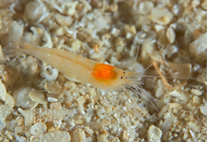Abstract
We document the first specimen of a dipsadid snake from the Anguilla Cays, Cay Sal Bank, The Bahamas. We analyze 3,426 base pairs (bp) of sequence data derived from five mitochondrial loci and one nuclear locus using Maximum Likelihood (ML) and Bayesian Inference (BI) methods. Our molecular data agree with some aspects of morphology (e.g., scale counts, dentition, and color pattern) supporting identification of this specimen as the Cuban Racer, Cubophis cantherigerus cantherigerus (Bibron 1840), a species previously regarded as endemic to Cuba. This discovery provides another example of the strong Cuban affinities of the terrestrial vertebrate fauna of Bahamian islands.

